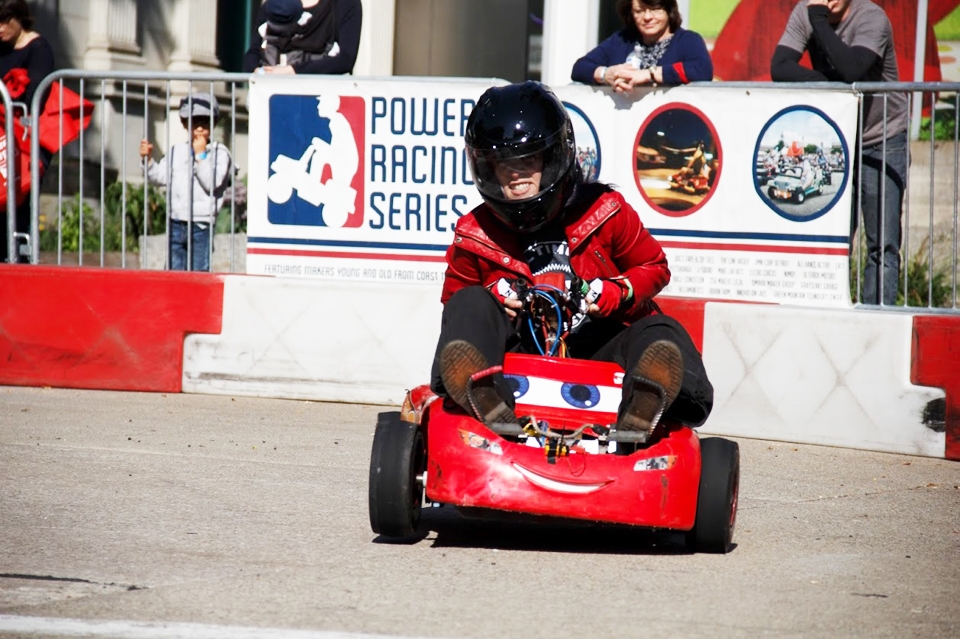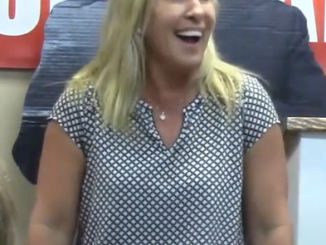
By Sean Spencer | Staff Writer
Robots play in a cage with a ball while little cars made out of children’s toys race. The Maker Faire Pittsburgh offers a fun, enlightening experience for people of all-ages.
Produced by the Children’s Museum of Pittsburgh, along with HACKPittsburgh, the Faire gives “makers” — anyone who uses tools to tell a story — the time show off their creations, from jewelry to go-carts to drones. The event showcased more than 200 exhibits, performances and presentations.
The first Maker Faire in Pittsburgh was in 2014, and it connects the city’s history of innovation to its current position as a leader in technology, education and entrepreneurship. The original Maker Faire started in 2006 in San Mateo, California and has since expanded nationally and internationally.
For the 2016 Faire, special events included the Pedal Powered Main Stage, presented by Green Mountain Energy; the Workshop Zone, presented by Chevron; and the Drone Zone.
Pedal Powered Main Stage was an invention that needs power from a bicycle-type machine to create live music, performing arts pieces, dances and more on the main stage.
The Workshop Zone involved hands-on activities, such as making music with Avalon Elementary Design and Build Team. The group is made up of young fifth and sixth graders who are in an after school club that designs and builds projects.
The Nikola Tesla Experience allowed attendees to learn the Serbian-American engineer and inventor’s story through interactive activities like coloring in his legacy with the Tesla coloring book or controlling a musical Tesla Coil.
The Drone Zone allowed attendees to view the region’s best drones, learning how they function and watching them fly above you.
Duquesne University was also in on the action.
The Citizen Science Lab is a community laboratory that was cofounded by Duquesne University and Urban Innovation 21. The group operates a 1,500 square-foot biomedical laboratory that is publically available to the Pittsburgh community, said Andre Samuel, a Duquesne University graduate.
At the Faire, the Citizen Science Lab had a gas expansion experiment for showgoers to interact with. Samuel also mentioned they hire most of their interns from Duquesne University.
There were a variety of innovations being showcased at the event.
One man’s trash is Brain Spirl’s treasure. Spirl, who is from Michigan, sees “people’s discards as tools of disassembly for artistic redesign and repurpose.” With metal and other elements he creates sculptures of everything from “robots to a moose head wall mount or a bouquet of flowers.”
Other vendors had clever animal-related crafts on display, too.
Tristan Sopp had a booth of animal heads made out of papier-mache. A dragon, panda and an owl were just some of the animals he brought.
Even a famous YouTuber with almost 400,000 subscribers was there to show off his innovations.
Greek Gadget Guru is a YouTube channel that shows off created gadgets based on video games, comics and science fiction movies. Pavlos Kyros, the channel’s creator, uses mainly use 3-D printing to bring to life his work. At his booth he had on display a shoulder shield based off Iron Man’s suit of armor.
Kyros said that though he only showcases his inventions on his channel, he wants to use his creations and develop a story with them. Inspirations for Kyros’ gadgets include the Percy Jackson series of novels and the Assassin’s Creed video game series.
Something used for connecting electronic components could also be used as a fashion statement.
Circuit Breaker Labs, started by Amanda Preske, makes and sells jewelry out of circuit boards that were “heading for the trash.” She creates earrings, necklaces and cufflinks out of something considered garbage.
The Maker Faire gives the idea that anyone can make anything.



